My aunt always found a way to repurpose vegetables into delicious dishes. This vegetable korma (or veg kurma as we call it in our house) is one such dish. Technically, this is a "curry" made with a rich and creamy coconut base. We tend to always add potatoes and peas to our kurmas, but you can also add other vegetables - cauliflowers, carrots, green beans all taste great.
This post contains helpful tips and tricks! If you're in a rush, please use the "Jump to Recipe" below!
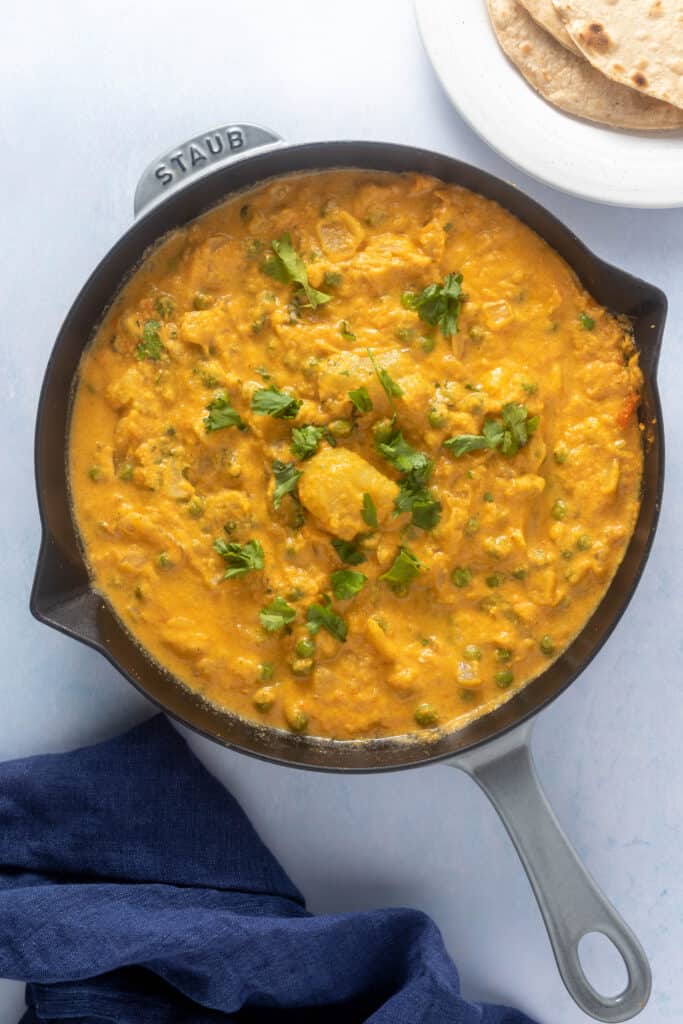
📋 Vegetable korma ingredients
Vegetable korma is a creamy, coconut-based curry. My recipe is from South India and made with an assortment of hearty vegetables like potatoes, peas, carrots, cauliflowers and green beans and has a spice base made of coconut, ginger and garlic. In some cases, cashew nuts are also ground and added to the korma to give it a thicker, creamier consistency. FYI, korma is the North Indian way of saying it, and kurma is South Indian.
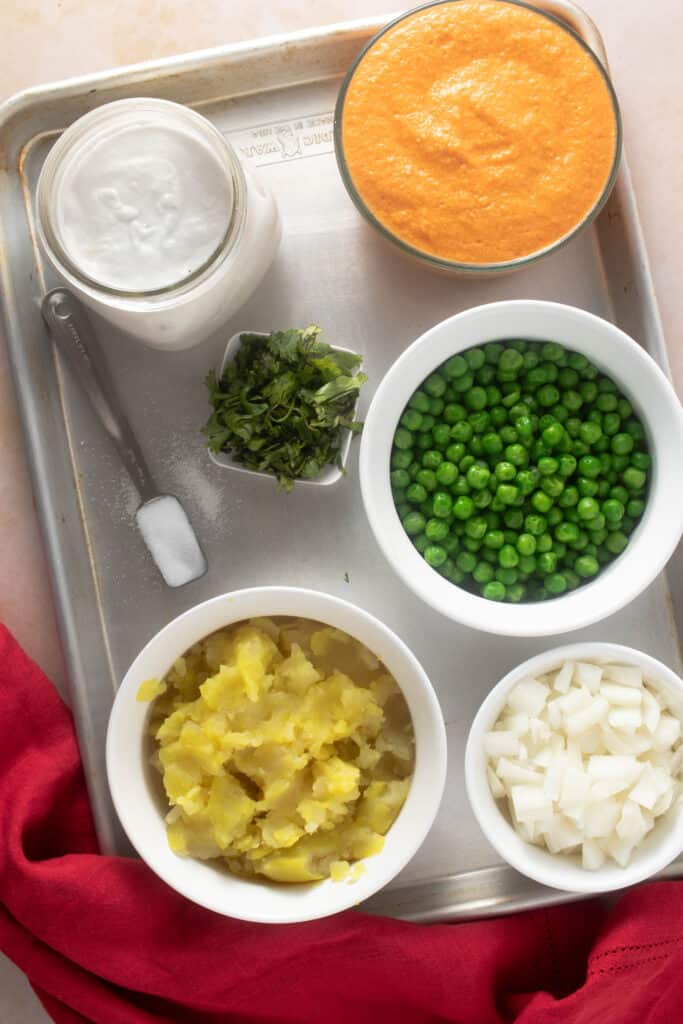
🍲 Three tips for the perfect korma
Choose the right vegetables
Aloo korma is just potatoes; vegetable korma has other stuff thrown into the mix. As mentioned above, you can use most hearty vegetables like carrots, cauliflower, peas and green beans. You can also use just tomatoes, corn, and a wide variety of other vegetables in this dish. I've even seen legumes, especially chickpeas, thrown into this.
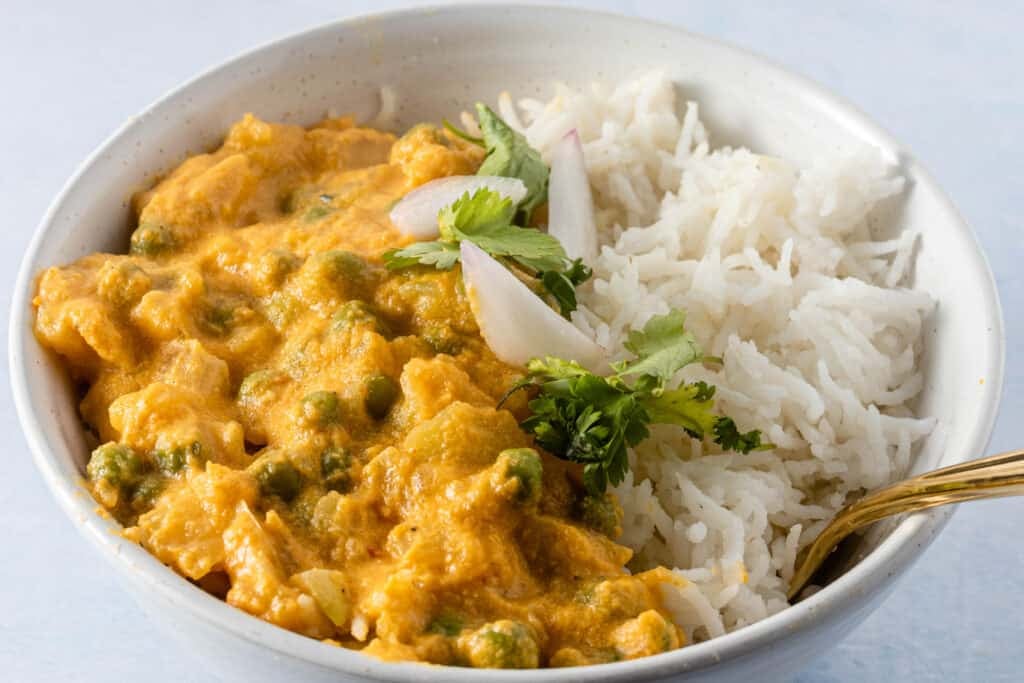
Adjust the spice paste as you make it
The spice paste, as with other Indian recipes on this blog, really makes or breaks the dish. But it's also super versatile, so you can adjust it as you make it. My spice paste uses desiccated coconut, ginger paste, garlic, red onions, Thai green chili and tomatoes.
To make it less spicy and fresh, add more coconut. To make it spicier, add an extra chili pepper or dried Indian red chili peppers. If you can't find Thai chili peppers, you can use Serrano peppers. To make it more rich, you can add an extra tomato or onion. To make it creamy, add ¼ cup of cashews and ½ cup of water. Ultimately, you know your spice palette the best!
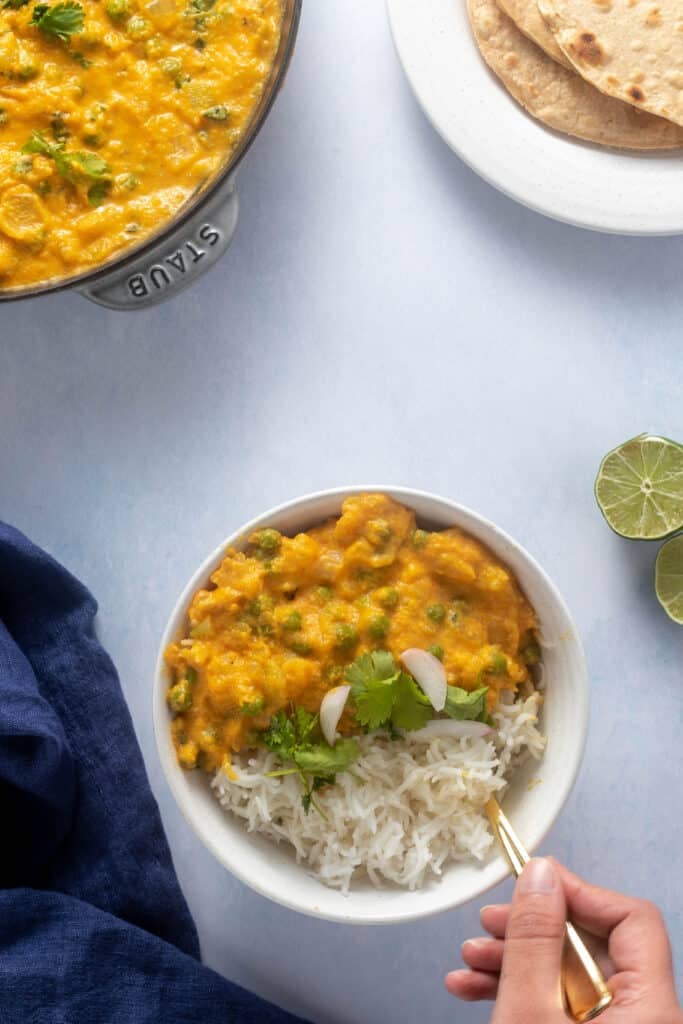
Use coconut cream to enhance the flavors
Traditionally, this recipe is sometimes made with curd (i.e. plain yogurt) to give it more of a tangy finish or with heavy cream, to make it more rich. But my recipe is vegan and uses coconut cream to do a bit of both and also really enhance the coconut flavors in the korma.
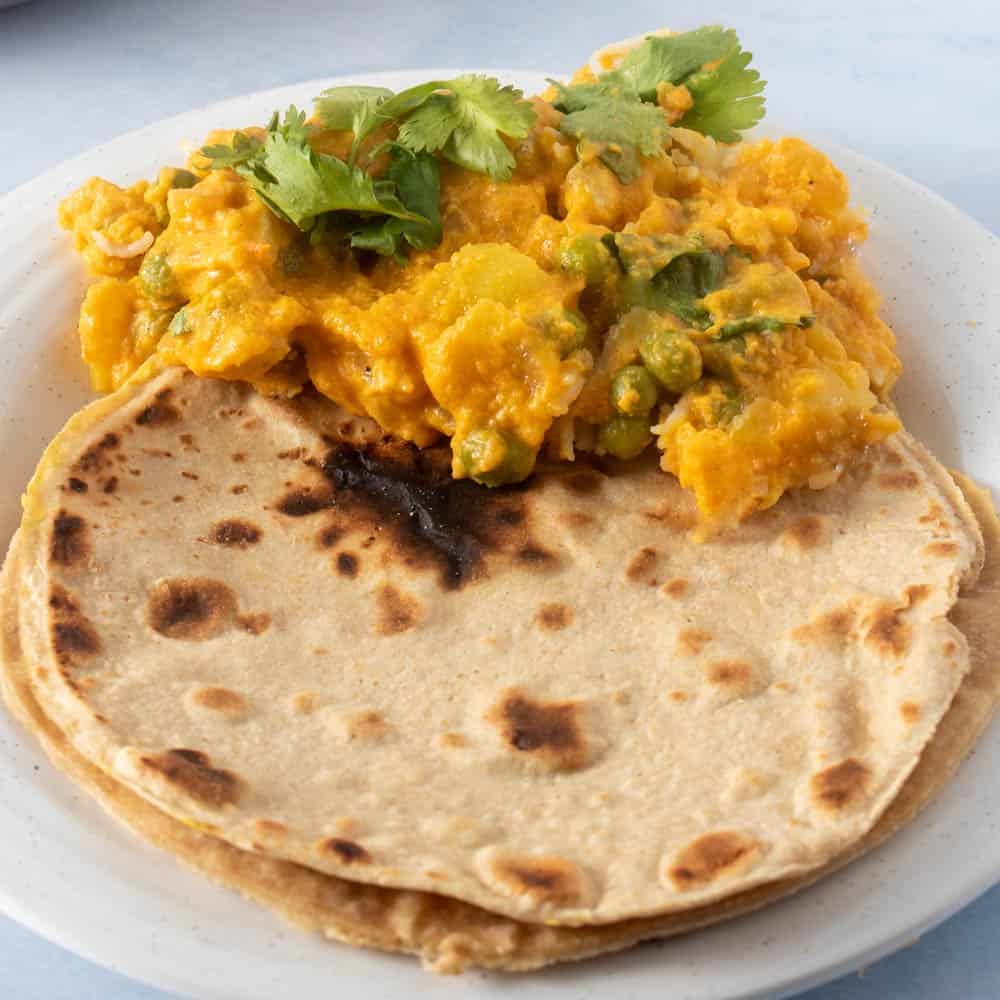
🥣 Storage & serving suggestions
I love to serve this korma with Indian flatbread - mostly roti but sometimes naan, depending on the mood. This also tastes excellent with rice. One of my other favorite ways to eating vegetable korma is with a fried flatbread called poori - recipe for that coming soon, so stay tuned!
I also love serving with korma with a kachumber salad, which adds a great refreshing touch to the creaminess of this dish. Of course, when I make it, I don't include cucumbers, but you can make them either way!
If you try this recipe, let me know! Leave a comment, rate it, and tag #urbanfarmie on Instagram or @urbanfarmie on Pinterest!
📖 Recipe
Vegetable Korma
Equipment
- Food Processor or Blender
Ingredients
Spice Base
- ¼ cup coconut, shredded, unsweetened
- 1 teaspoon ginger paste
- 1 teaspoon minced garlic, substitute with 2 cloves of fresh garlic
- 2 Thai green chili peppers, substitute with Serrano
- 3 tomatoes, medium, chopped
- ½ red onion, medium, chopped
- 1 teaspoon Kashmiri red chili powder, substitute with paprika as needed
Korma Base
- 1 teaspoon vegetable oil
- ½ red onion, medium, chopped
- 2 teaspoon turmeric powder, divided
- 1 cup coconut cream
- 3 potatoes, boiled and mashed (medium size)
- 2 cups frozen peas
- 2 tablespoon cilantro, chopped, for garnish
- 2 teaspoon salt, adjust to taste!
Instructions
Start by boiling potatoes
- Add 1 teaspoon of turmeric to a medium pot with water
- Peel the potatoes and quarter them into clean chunks
- Add quartered potatoes to the pot and bring to a boil on medium heat for about 20 minutes until a fork is easily inserted into the potatoes
- Drain the potatoes, mash and set aside
Prepare the spice base
- While potatoes are boiling, chop tomatoes, onions and chili peppers
- Add shredded coconut, ginger paste, minced garlic, tomatoes, half the chopped onions, red chili powder, and Thai green chili peppers into a food processor or blender and pulse into a smooth paste
Make vegetable korma
- Heat some oil in a medium pot on medium flame
- Add other half of chopped onions and saute until fragrant - about 3 minutes
- Add the pulsed sauce to the sautéed onions along with the mashed potatoes and a cup of coconut cream, 2 teaspoons of salt, half a cup of water, and bring to a simmer (bubbles will start forming along the edges). Simmer for 3-5 minutes covered. Add the frozen peas at the very end and stir into the korma.
- Garnish with chopped cilantro and serve hot!
Notes
- Peeling potatoes before boiling them in the turmeric infused water gives them a nice golden, yellow color. But if you don't have a peeler, or want to make things quicker, just pop them in with the skin on and then remove the skin once boiled - they usually slide right off!
- I only used potatoes and peas in this recipe but you're welcome to add cauliflower, carrots, corn, and any other hearty vegetables of your choice to round it out
- If you can't find shredded coconut, that's fine - you can just use coconut cream and it'll still taste delicious, I promise. Likewise, if you can't find coconut cream - use coconut milk instead. Instead of using the coconut cream and water, use a can of coconut milk (14.5oz)
Nutrition
In the meantime, check out these other Indian recipes:





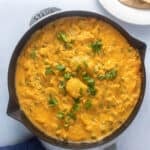
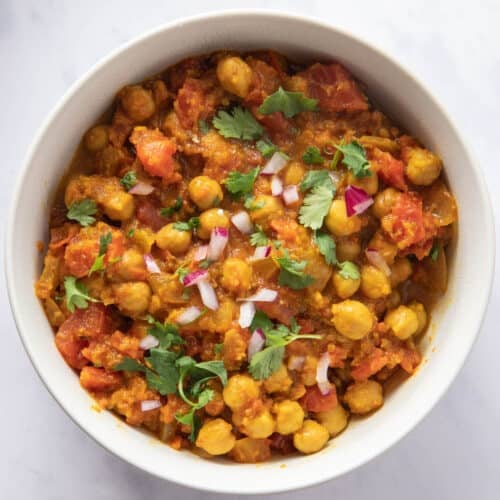
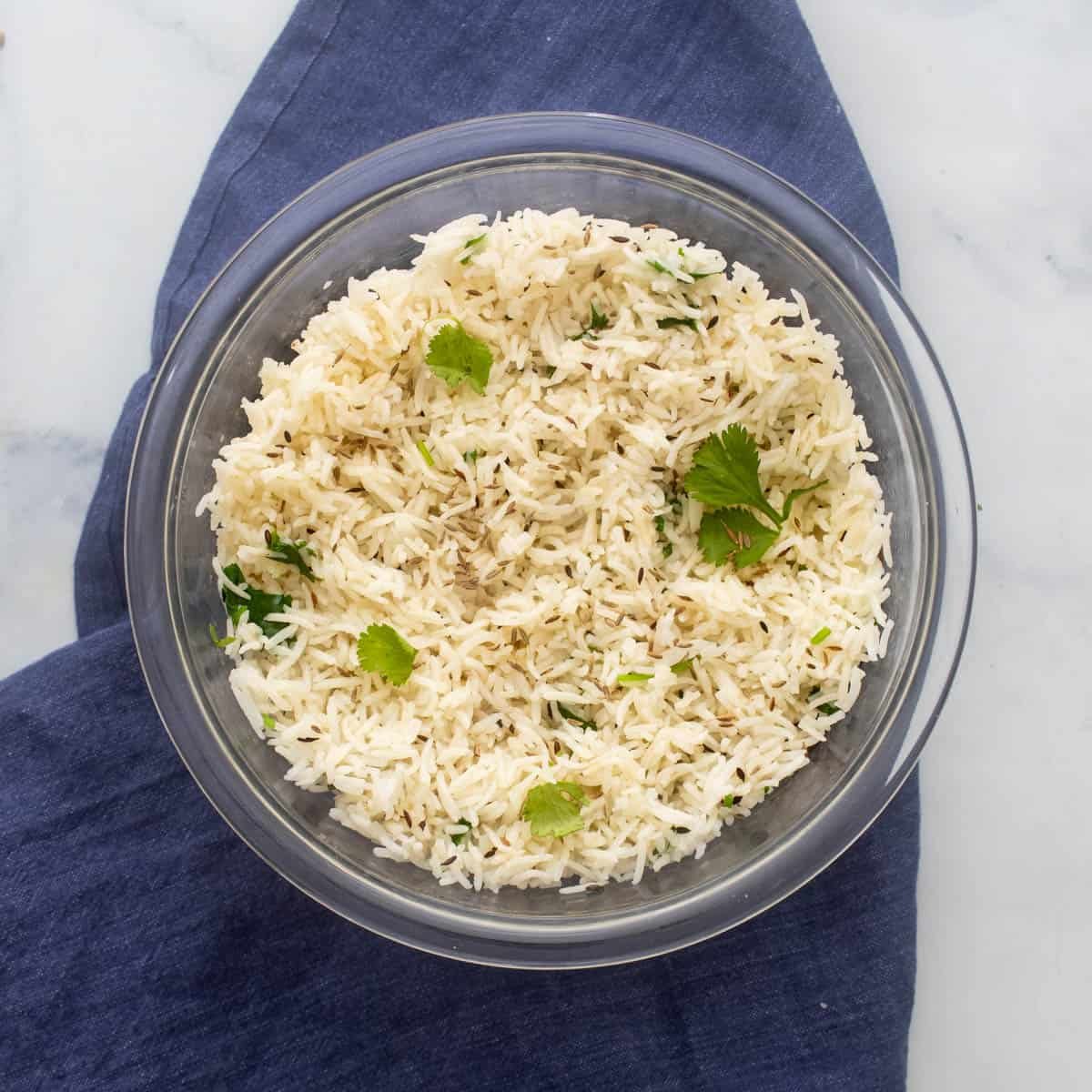
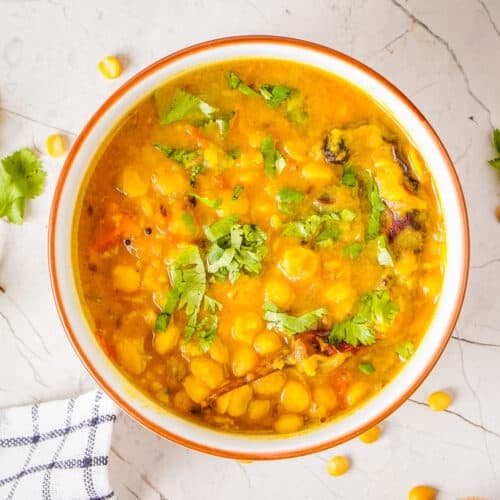








Looks good! The recipe does not mention when to add the peas.
If I decide to use cauliflower, carrots, etc,, would I withhold some of the potato? And do you recommend those veg be mashed, too?
Thanks John! The frozen peas are added at the very end (since they're already parboiled before frozen).
If you decide to use other vegetables, I suggest that you cook them partially along with the potatoes (so for instance, in this case, you can just add the cauliflower florets and carrots into the pot of boiling water as well). You don't need to mash them, but it is a good idea to cook them most of the way through so they integrate with the curry! And yes, I would suggest keeping the overall "amount" of vegetables roughly the same to make sure that it doesn't become too dense! Hope that helps.
This looks delicious! Are the mashed potatoes stirred into the dish at the end?
Thanks Laura! Yes, you'll stir them into the dish at the end if you want them more chunky or you can add them along with the coconut milk in the penultimate step and allow them to simmer for a few minutes if you want them more "mashed" so to speak 🙂